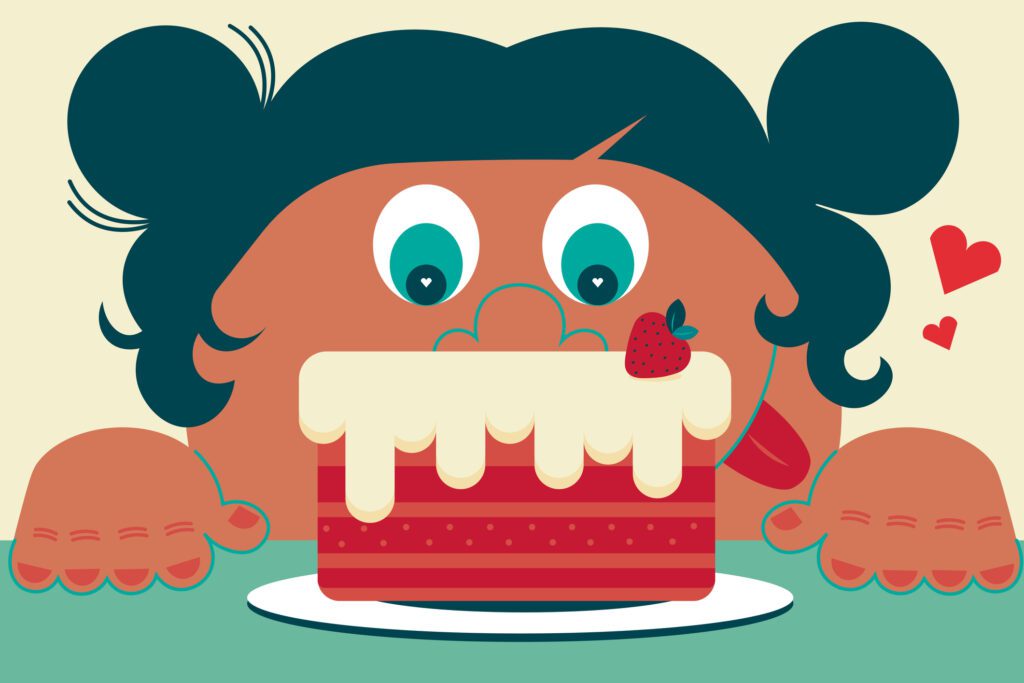Encouraging Healthy Habits at a Young Age
It’s no secret that obesity is a growing epidemic in the United States and our children are no exception. The most recent data shared by the State of obesity highlight some disturbing statistics. Childhood obesity percentages tripled from 5-7% in the 1970s to a whopping 17% in 2014. Even more alarming, the number of children with a body-mass index (BMI) of more than 40 (30 or higher is considered obese in adults) increased from 0.9% in 1999 to 2.4%, just 15 years later. This means that not only are our children’s bodies getting larger, they are reaching dangerous levels of body fat at an earlier age.

The Facts on Fat
Obesity is a medical label given to individuals who have too much excess body fat. Since children are still growing, calculating BMI is preferable to weight measurements because it accounts for growth, comparing their BMI rates with others of the same height, age, and gender. According to Dr. Joani Jack, a pediatrician and childhood obesity specialist at Children’s Hospital at Erlanger, “If the BMI is between the 5th and 84th percentile, they are at a healthy weight. If the BMI is between the 85th and 94th percentile, they are overweight. And if the BMI is 95th percentile or greater, they are obese.”
The health impacts of excess body fat can be devastating. Dr. Jack explains, “Children who are overweight or obese are at risk for a number of problems, both in childhood and throughout their lives. The medical risks include diabetes, high blood pressure, heart disease, sleep apnea, and bone and joint problems.” And what’s especially concerning – studies report that a staggering 80% of children who remain obese throughout adolescence will grow up to be obese adults.
Unfortunately, medical issues aren’t the only area of concern for children struggling with weight issues. Overweight and obese children often face social discrimination from other children or adults and can also develop “emotional disabilities including anxiety, depression, and bipolar disease, as well as an increased risk of being bullied by other children,” says Dr. Jack. These issues can have a sweeping impact, leading to low self-confidence and a lack of ambition in adulthood. One study from the University of Michigan found that chronically overweight people were 50% more likely to be single, unemployed, and on welfare.
Developing a Healthy Lifestyle
Fortunately, helping children make nutritious choices early can improve their odds of becoming healthy adults. Here’s how you can set them up for success.
Stay Positive
It is critical that children maintain a positive body image. If you are concerned about the weight of your child, make sure to focus on his or her overall health – not weight loss or appearance. Dr. Tonia Cox, a pediatrician with CHI Memorial, shares, “Childhood obesity is a very complex issue because food is very much tied to our emotions. It is important to protect the self-esteem of our children and not demonize fatness or obesity.” Emphasize healthy food choices and the importance of physical activity instead of body weight.
Choose Wisely
“As the primary role models, the biggest mistake parents make is not changing their diets along with their children’s. If you are eating unhealthy foods, your children will too,” says Dr. Tyler McCurry, a family medicine physician with Tennova Primary Care. Though transitioning to a healthy diet can be difficult, following certain rules can make it easier. First, stick to foods that grow naturally in the earth, such as vegetables, fruits, and whole grains. Encourage kids to drink lots of water and limit sugary beverages like soda and fruit juice. Cook with lean proteins like poultry, fish, lean meats, lentils, beans, and eggs. They’ll fill you up and provide necessary nutrients. Dr. Cox adds, “Avoid processed foods or ‘convenience foods’ and stop snacking on the go. Eating all the time can lead to higher levels of insulin and create patterns that are hard to break.” And, while most foods can be consumed in moderation, sugar-rich foods and sweets should not be a part of anyone’s daily diet.
Eat Together
Life is busy and planning regular family dinners at home can feel burdensome. However, it may be time to consider rearranging your schedule for this critical activity. Research shows that children in homes where the family eats regular, home-cooked meals together are more likely to eat less, get better grades, and avoid peer pressure as teenagers. Plus, the average restaurant meal has 60% more calories and costs significantly more than a home-cooked meal. Try planning some simple dinners you can cook with minimal preparation, and set a time when your family can meet around the table each night to talk, share food, and spend some quality time together.
Understand Portions
In addition to making healthy choices, it is important to teach kids about reasonable portion sizes. Unfortunately, most labels come with measurements that might be difficult for children to decipher. So, instead of focusing on ounces or cups, try using real-world visuals to teach children what an appropriate portion looks like. A serving of dry cereal, vegetables, or yogurt (1 cup), for example, is about the size of a baseball. A full serving of raisins is about the size of a golf ball, and a serving of lean beef or chicken is roughly the size of a deck of cards.
Get Physical
Much like healthy eating, exercise should be a family affair. Nothing will encourage children to be physically active more than seeing the adults in their lives do the same. “Try activities like doing chores together, taking a walk outside, creating fun indoor games (such as hide and seek or broomstick limbo), or playing video games that force you to get up and move,” says Dr. McCurry. Encourage your children to try different sports teams or activities that they are interested in. This way they can find something they truly enjoy, making them more inclined to stick with it. “It is important for children to incorporate 60 minutes of physical activity into their lives every day,” says Dr. Cox.
Strategies for Long-Term Success
“Getting the whole family involved makes it much easier to eat healthy and stay active,” says Dr. McCurry. Try to create specific goals, such as walking or swimming for an hour each day, eating five meals together as a family each week, or trying one new healthy food per week. Tangible goals allow children to experience numerous successes as they progress in their health journey.
Praise is also a critical component of long-term success. Make sure to focus on what children do right, praising and rewarding them when they accomplish a goal and encouraging them when they struggle. Even small successes should be celebrated. Just make sure to steer clear of any food-related rewards or punishments, which can create emotional eating problems down the road.
Though childhood obesity is a serious problem, the tools for promoting change are within reach. Dr. Jack explains, “Childhood obesity is the biggest threat facing our children today, and we must be willing, as a community and as a nation, to make its prevention and treatment one of our highest priorities. If we work together, we can and will make an important difference in the lives of our children.”


Dr. Joani Jack
Pediatrician and C-HEAL Director, Children's Hospital at Erlanger


Dr. Tyler McCurry
Family Medicine Physician, Tennova Primary Care - Chambliss


Dr. Tonia Cox
Pediatrician, Pediatric Diagnostic Associates at CHI Memorial

